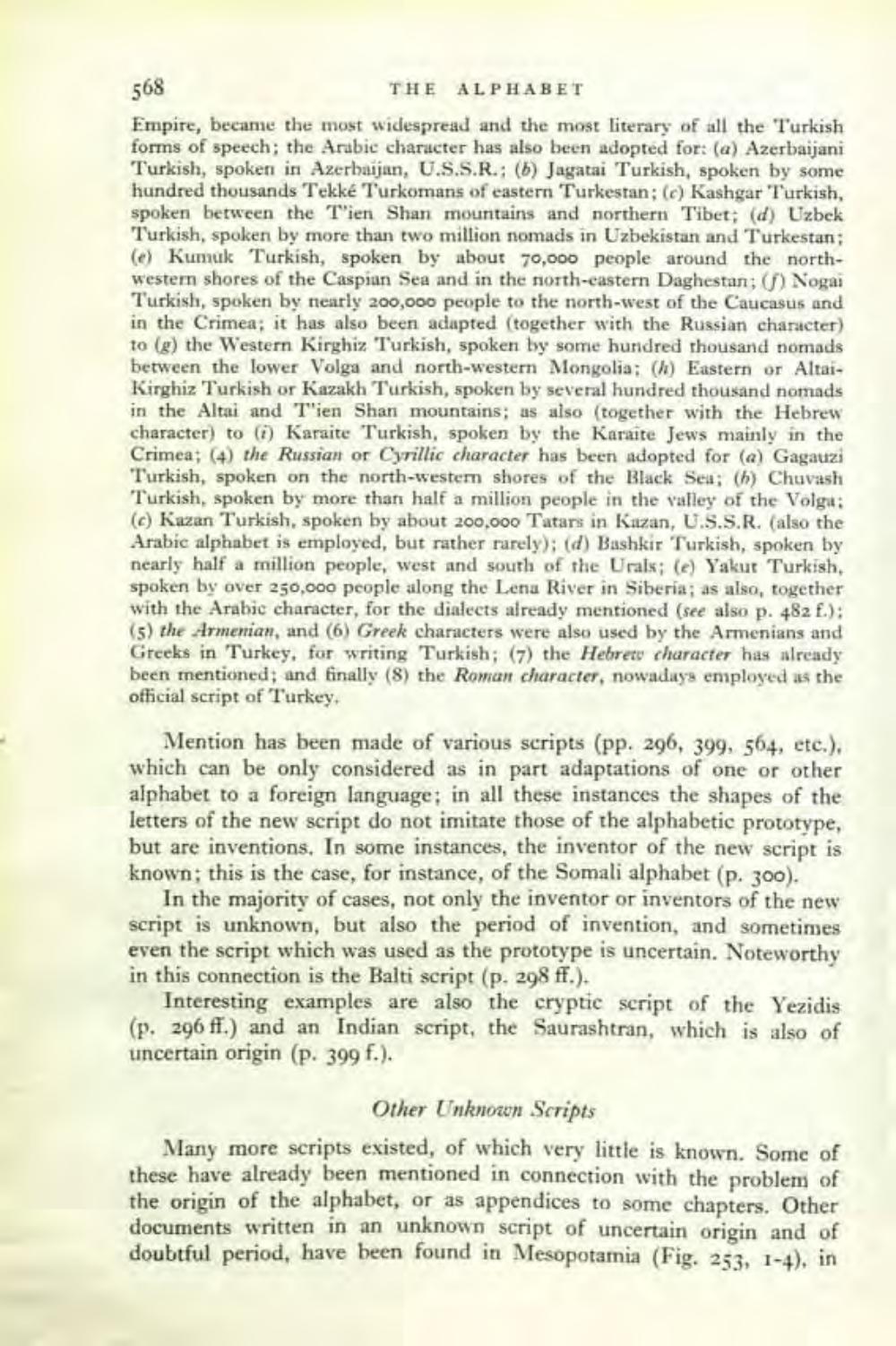________________
568
THE ALPHABET Empire, became the most widespread and the most literary of all the Turkish forms of speech; the Arabic character has also been adopted for: (a) Azerbaijani Turkish, spoken in Azerbaijan, U.S.S.R.; (5) Jagatai Turkish, spoken by some hundred thousands Tekke Turkomans of eastern Turkestan; (c) Kashgar Turkish, spoken between the Tien Shan mountains and northern Tibet; (d) Uzbek Turkish, spoken by more than two million nomads in Uzbekistan and Turkestan; () Kumuk Turkish, spoken by about 70,000 people around the northwestern shores of the Caspian Sea and in the north-eastern Daghestan; () Nogai Turkish, spoken by nearly 200,000 people to the north-west of the Caucasus and in the Crimea; it has also been adapted (together with the Russian character) to (g) the Western Kirghiz Turkish, spoken by some hundred thousand nomads between the lower Volga and north-western Mongolia; (h) Eastern or AltaiKirghiz Turkish or Kazakh Turkish, spoken by several hundred thousand nomads in the Altai and Tien Shan mountains; as also (together with the Hebrew character) to (i) Karaite Turkish, spoken by the Karaite Jews mainly in the Crimea; (4) the Russian or Cyrillic character has been adopted for (a) Gagauzi Turkish, spoken on the north-western shores of the Black Sea; (h) Chuvash Turkish, spoken by more than half a million people in the valley of the Volga; (c) Kazan Turkish, spoken by about 200,000 Tatars in Kazan, U.S.S.R. (also the Arabic alphabet is employed, but rather rarely); (d) Bashkir Turkish, spoken by nearly half a million people, west and south of the Urals; (e) Yakur Turkish, spoken by over 250,000 people along the Lena River in Siberia, as also, together with the Arabic character, for the dialects already mentioned (see also p. 482 f.); (3) the Armenian, and (6) Greek characters were also used by the Armenians and Greeks in Turkey, for writing Turkish; 7) the Hebrety character has already been mentioned; and finally (8) the Roman character, nowadays employed as the official script of Turkey.
Mention has been made of various scripts (pp. 296, 399, 564, etc.), which can be only considered as in part adaptations of one or other alphabet to a foreign language: in all these instances the shapes of the letters of the new script do not imitate those of the alphabetic prototype, but are inventions. In some instances, the inventor of the new script is known; this is the case, for instance, of the Somali alphabet (p. 300).
In the majority of cases, not only the inventor or inventors of the new script is unknown, but also the period of invention, and sometimes even the script which was used as the prototype is uncertain. Noteworthy in this connection is the Balti script (p. 298 ff.).
Interesting examples are also the cryptic script of the Yezidis (p. 296 ff.) and an Indian script, the Saurashtran, which is also of uncertain origin (p. 399 f.).
Other Unknown Scripts Many more scripts existed, of which very little is known. Some of these have already been mentioned in connection with the problem of the origin of the alphabet, or as appendices to some chapters. Other documents written in an unknown script of uncertain origin and of doubtful period, have been found in Mesopotamia (Fig. 253, 1-4), in




